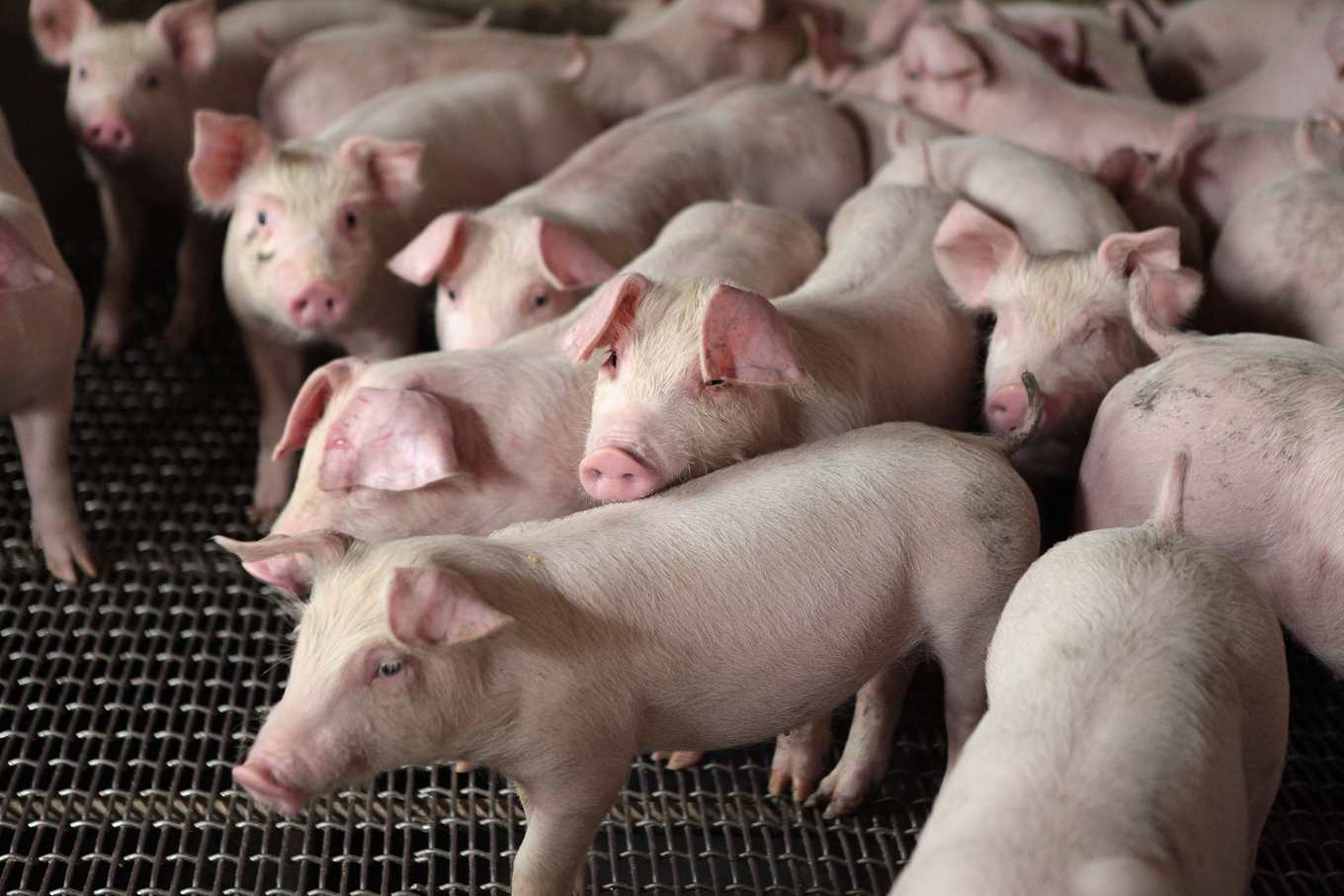Non-resistant feeding 01 "antibiotics kill most bacteria in animal intestines, creating the risk of drug resistance. Scholars are looking for alternatives."
1 sharing
"non-resistant breeding" has become an international trend in animal husbandry, and "green farming" has become a trend. Has Taiwan caught up? Antibiotics and all kinds of animal drugs should be exempted, so how to maintain animal health?
Standing at the forefront of this wave, Yu Bi and Li Zitai, professors in the Department of Animal Science at Chung Hsing University, have been engaged in research over the years to improve the nutritional utilization and immunity of animals with probiotics, enzymes and plant agents (chemical components taken from natural plants). Accumulate fruitful research and development results. If you lay a healthy foundation for animals and have a strong head, you will naturally reduce the use of animal antibiotics, reduce drug pollution in the vast environment, avoid drug resistance by microorganisms, and protect food safety from drug residues.


Professor, Department of Animal Science, Chung Hsing University (right) Yu Bihe (left) Li Zitai (Photography / Cai Jiashan)
Yu Bi, a retired honorary special professor, is a rare female researcher in the field of animal husbandry. "all the students on my side are women as men, because I used to be like this." The godmother is so petite and rigorous in her studies that it is hard to imagine her bravely going deep into the cow's rectum with her bare hands 40 years ago.
The cheerful and talkative Li Zitai used to be a student of teacher Yu Bi. after returning to his alma mater to teach, he continued to study animal nutrition, garlic stalks, mushroom space bags and other agricultural wastes, which in his eyes have become high-quality feed additives. to build a strong physique for poultry and livestock without increasing the cost too much. The general industry always thinks that antibiotics are the cheapest, probiotics or plant essential oils are expensive, and their effects are not as effective as antibiotics, but Li Zitai affirms: "without resistance to feeding and reducing costs, it is possible to go in parallel!"
Taking antibiotics to "promote growth" leads to the risk of drug resistance
People need to take medicine when they are sick, and so do animals. That said, the use of antibiotics in animal husbandry is not entirely for the purpose of curing diseases. In addition to formal treatment, operators may also add low-dose antibiotics to feed in healthy conditions where the animals are not sick, in order to achieve the purpose of "growth" and "disease prevention".
Antibiotic growth promoters (Antibiotic growth promoters,AGPs) were launched in the 1940s, when pharmaceutical companies found that livestock could gain weight rapidly and reduce morbidity after eating feed mixed with antibiotics, and animal husbandry was immediately rewarded. Intensive feeding model is easy to cause animal urgency and immunity decline, but "preventive administration" with antibiotics can be improved, followed by the rise of industrial large-scale breeding model, which is closely related to this.
The amount of antibiotics used in animal husbandry is staggering, and it is estimated that at the beginning of the 21 century, half of the antibiotics produced in the world were used in animals. In large industrialized farming countries, the amount of antibiotics in animals is much higher than that in humans. Martin J. Blaser, M.D., points out in his book microbes that should not be killed: how the abuse of antibiotics accelerates the spread of modern plague, 70 to 80 percent of antibiotics sold in the United States are used in animal husbandry to "fatten animals."


Let pigs eat with antibiotic feed, let pigs fatten more quickly (picture / upstream and downstream information photo) EU forbids the addition of antibiotics to feed, nine items are available in China
Behind the prosperity, the crisis followed. Long-term administration of low-dose antibiotics in intensive breeding environments allows microbes to slowly fine-tune to develop drug-resistant hotbeds and even create so-called "superbugs" that are dangerous to spread from animals to humans. In 2013, a Danish study confirmed that two farmers were infected with Staphylococcus aureus MRSA, a bacterium resistant to multiple types of antibiotics, as a result of contact with animals they raised. In Taiwan, MRSA is also the number one pathogen of nosocomial infection.
In 2006, the European Union ordered the comprehensive addition of antibiotics to feed as a growth promoter, and the United States also tightened its regulations. In China, the available items have been deleted one after another, especially the types of antibiotics that are common to both humans and animals. at present, there are still nine kinds of antimicrobials left in the "medicated feed additives" (such as notes). But unlike formal animal use, these antibiotics can be added without a veterinarian's prescription.
Antibiotics kill most bacteria in the intestinal tract of animals and gain weight faster.
- Prev

2019 Taoyuan Landscape Art Festival sees the different charm of artistic creation
Zheng Wencan, mayor of Taoyuan, went to Dacheng Forest Park on the afternoon of the 15th to attend the theme activities of the 2019 Taoyuan Landscape Art Festival "Peach Sweet Curd", perform "Mr. bottle Magic Troupe" Grandma's Gift ", and visit the scenery of the Dachang Exhibition area.
- Next

No anti-feeding 02 "raise animals without antibiotics, plant agents are rammed, oriental Chinese herbal medicine is a treasure house, helping anti-oxidation."
No anti-feeding 02 "raise animals without antibiotics, plant agents are rammed, oriental Chinese herbal medicine is a treasure house, helping anti-oxidation."
Related
- A course of planting techniques and methods on how to grow carrots
- How to plant the latest tulips?
- Is it better to pick tea in the morning or in the afternoon? When is the best time for tea to be picked? what is the third or fifth tea?
- Launch Yuanxiao Happy combination Haocha + Tea Yuan healthy Taste
- Penghu Tourism "Fireworks 20 Parade with You"
- 2022 West Lake Happiness holds "Digital Revitalization Voucher" and draws iphone13 and laptop.
- Banqiao Fuzhou social houses are designed to change start-up combined with police elimination to create a safe and livable environment
- The convenient measure of "mechanical weeding" in Xinbei has been abused and the Agriculture Bureau has imposed heavy penalties on the illegal land consolidation.
- Changgeng University Joins Hands with Four Memory Factories to Rescue Memory Talent Shortage
- The list of Taiwan's top 100 MVP managers is listed by the Director-General of the Farmers' Association of Sanxia District.

